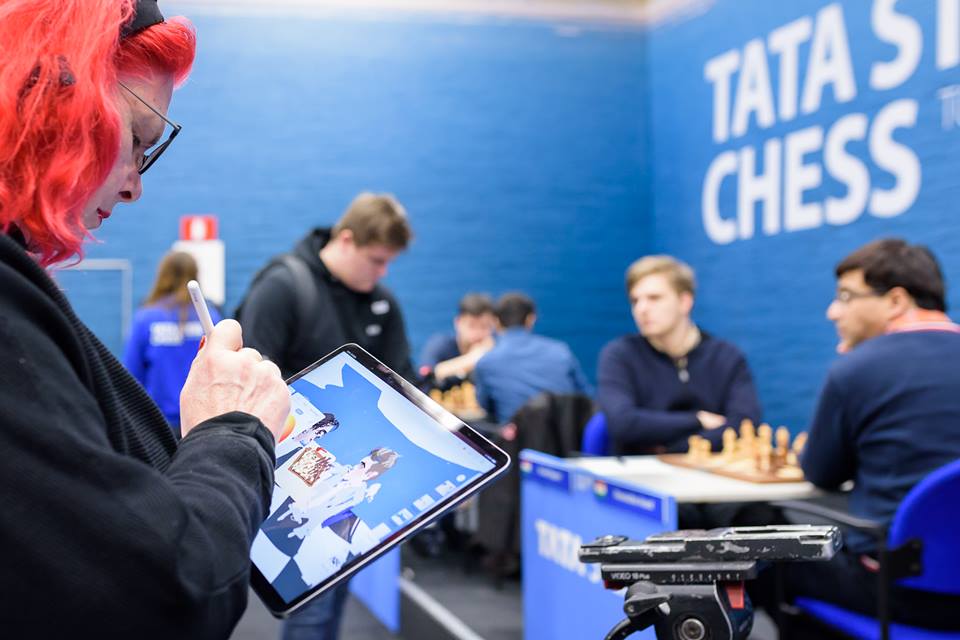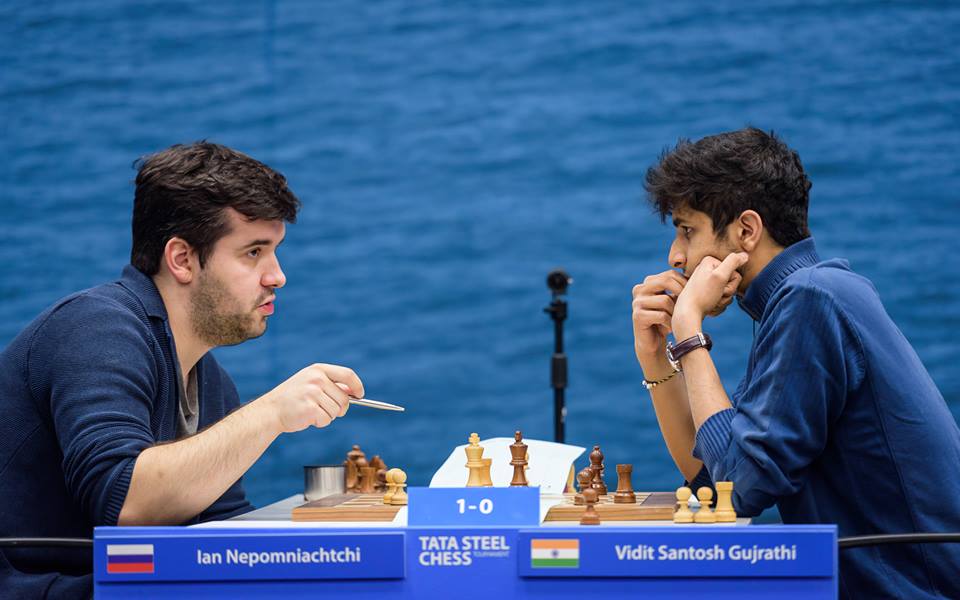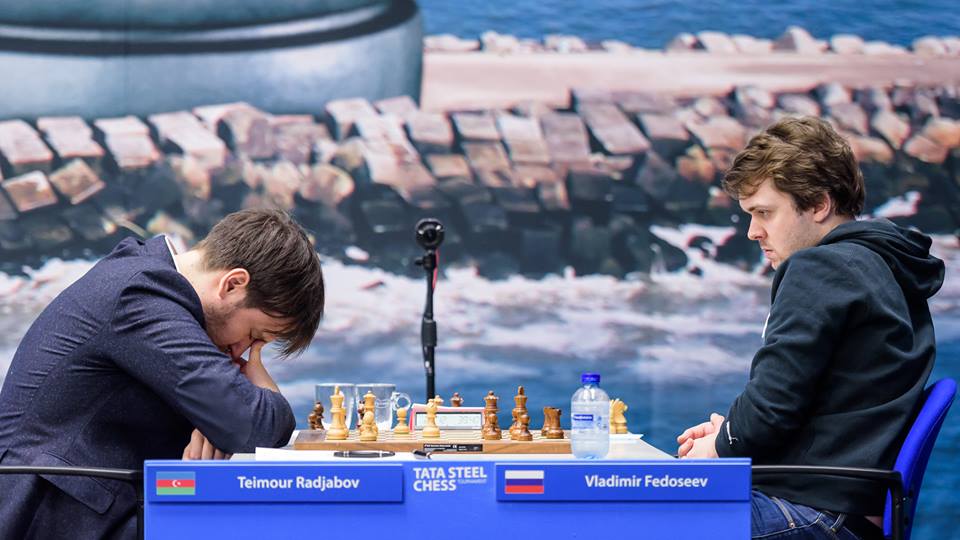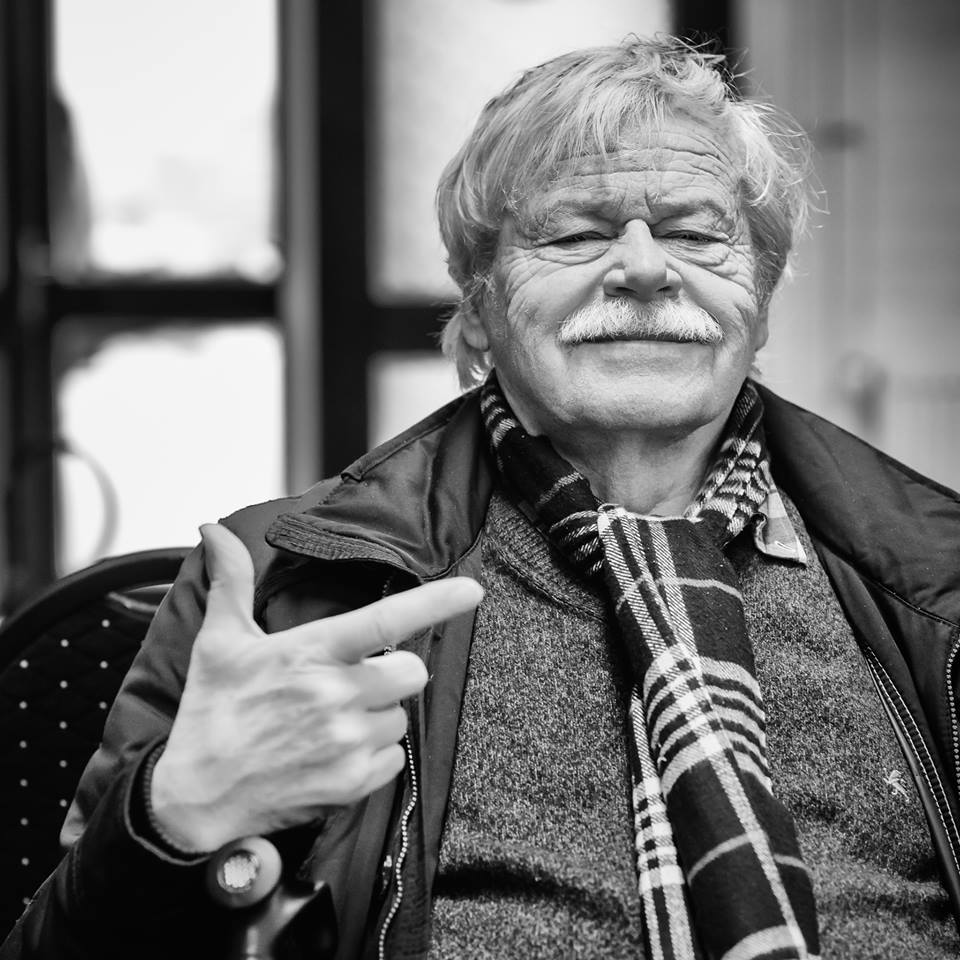


ChessBase 17 - Mega package - Edition 2024
It is the program of choice for anyone who loves the game and wants to know more about it. Start your personal success story with ChessBase and enjoy the game even more.
It is already a well-known fact that World Championship matches set opening trends both at the elite and amateur levels. Last year's challenger for the crown, Fabiano Caruana, used the Petroff as his main weapon with Black while getting his spot at the most prestigious chess event in the world and at the match itself. Vidit Gujrathi — like most elite players — probably looked into the 'Russian Defence' because of this and used it against Ian Nepomniachtchi in their ninth round game.
They followed the line played by Carlsen and Caruana in the sixth game of the match, when Magnus manoeuvred his knight no less than nine times in the first fourteen moves. 'Nepo' deviated on move six, however, and later confessed that he did not expect this opening, as Vidit is not an expert in said defence. The definite character of the position was established when Black exchanged his dark-squared bishop:
A queenless middlegame with bishops of opposite colours was set up after 23...Bxd4 24.Rxd4. The computer thinks it is a balanced struggle, but it is clearly more difficult to play with Black, as White has the space advantage and an easier path to progress on the queenside. Eventually, Nepomniachtchi managed to get an outside passed pawn on the a-file and went on to win the game after 37 moves:
Power Play 8 - Knights and Bishops
When we are starting out in chess we are told that knights and bishops both have a value of three points, but it is quite clear that in some positions a bishop is clearly superior to a knight - and vice versa. After watching this 8th Power Play DVD you’ll have a better idea of how to play positions with knights and bishops – what to look for, what to avoid, and how to place your pawns.
Black's position is hopeless. Vidit resigned.

The usual post-mortem discussion | Photo: Alina l'Ami
Despite starring some of the strongest players in the world, some supertournament games finish with decisive results from apparently innocuous positions — for example, a non-expert eye would not have realised how hard it was for Vidit to defend the almost symmetrical queenless position he had against Nepomniachtchi.
A clearer example was seen in the game Teimour Radjabov vs Vladimir Fedoseev. A tense struggle turned into a rook endgame in which Black was a pawn up. White had an active king, though, and it was not clear how the Russian would break through.
Probably Fedoseev was aware of the fact that the resulting pawn endgame was favourable, as he quickly played the winning combination that followed the exchange of rooks:
Black just pushed his pawn to b5, and after 84.axb5+ he quickly played 84...Kd6! instead of the 'automatic' 84...Kxb5 (which is a draw). The trick is that after 85.Kxg6 a4 86.f5 a3 87.f6 a2 88. f7 Ke7...
Pawn structures you should know
Every pawn structure has its typical plans and to know these plans helps you to find your way in these positions. On this DVD Mikhalchishin presents and explains the most common central structures: The Hedgehog, the Maroczy, Hanging pawns and the Isolani.
...White needs to defend his f-pawn with 89.Kg7 and Black queens with check: 89.a1Q+! winning the game. After 84...Kd6, Radjabov simply resigned.

Fedoseev is back on 50% | Photo: Alina l'Ami
Mere mortals usually avoid giving up a queen, as it is way too difficult to judge if there is enough compensation for the sacrifice (...or we do it 'bravely', trying to speculate our way into a lucky win). The same cannot be said about Jorden van Foreest's sacrifice against Anish Giri — the younger Dutchman did not fear his opponent's abilities when he gave up his queen:
First Steps in Gambits and Sacrifices by IM Andrew Martin
Gambit play and the joy of sacrificing is an important part of the improving process. In order to become a strong player you must learn to attack and make combinations. Many continue to play in an aggressive style throughout an entire chess lifetime!
The simple 16...fxe6 was playable, but Jorden's 16...Nf3+ is the computer's first suggestion. The game continued 17.Bxf3 Qxd2 18.exf7 Kxf7 19.Bxa8 Bf8 and Black gave back the queen shortly afterwards. There are many alternative lines and you can try them out on the diagram above. (After trying some lines, do not miss the analysis provided by GM Daniel Fernandez below).
After the tension was relieved, the players found themselves in a more controlled position and signed a draw after 30 moves, although Giri could have kept on pushing if he wanted to. He talked about his draw offer with Fiona Steil-Antoni:
Co-leaders Magnus Carlsen and Vishy Anand drew their games with Black against Sam Shankland and Richard Rapport, with Carlsen using a rather provocative defence against the U.S. Champion — he played both ...a6 and ...h6 before move five. Meanwhile, Ding Liren obtained a favourable position against Vladimir Kramnik — after the Russian got himself in time trouble — but could not convert it into a win in the end.
The second “Chess on Tour” round on Wednesday will see Carlsen having the white pieces against Anand in the much-awaited clash between co-leaders — the players of the Masters section will take a 45-minute trip (approximately) to the South Holland city of Leiden.

When colleagues admire your work... | Photo: Alina l'Ami
Standings after Round 9 - Masters
GM Danny King recapped the action from round nine
The "Mega" is the database every serious chessplayer needs. The database contains 7.1 million games from 1500 to 2017, in highest quality standard, full of top level analyses and completely classified.
Maksim Chigaev remains as sole leader of the Challengers tournament with four rounds to go — let us remember that the biggest prize in this event is a spot in next year's Masters section. Vladislav Kovalev and Andrey Esipenko are half a point behind and are still way within range of finishing on top.
The decisive games of Tuesday saw Benjamin Gledura beating Elisabeth Paehtz and getting his third win in four rounds; Stefan Kuipers winning for the first time in the tournament (against Lucas van Foreest); and Parham Maghsoodloo taking down Dinara Saduakassova with the black pieces.

Esipenko might qualify to the Masters at 16 | Photo: Alina l'Ami

A most-welcome visitor, Vlastimil Hort | Photo: Alina l'Ami
Standings after Round 9 - Challengers